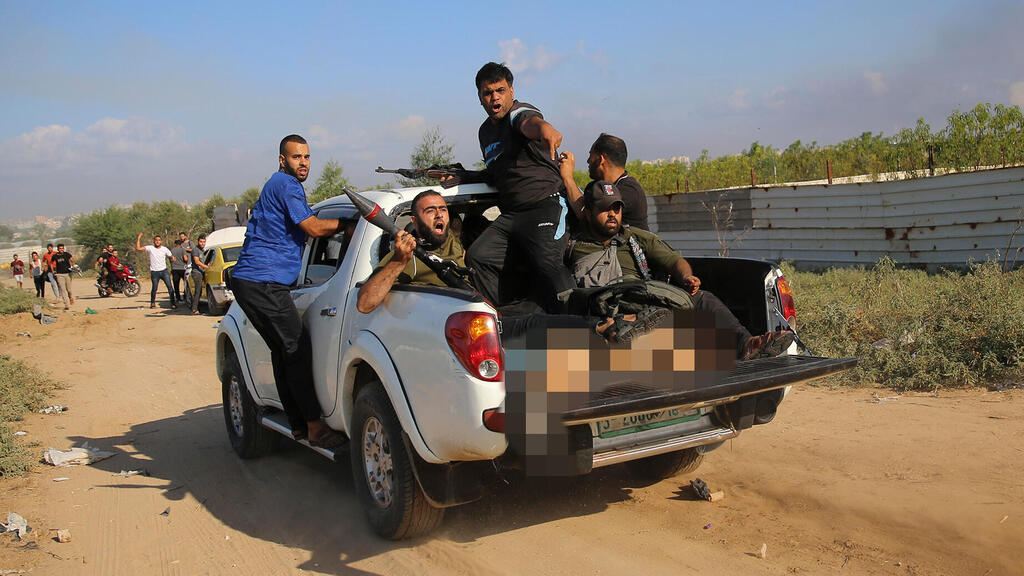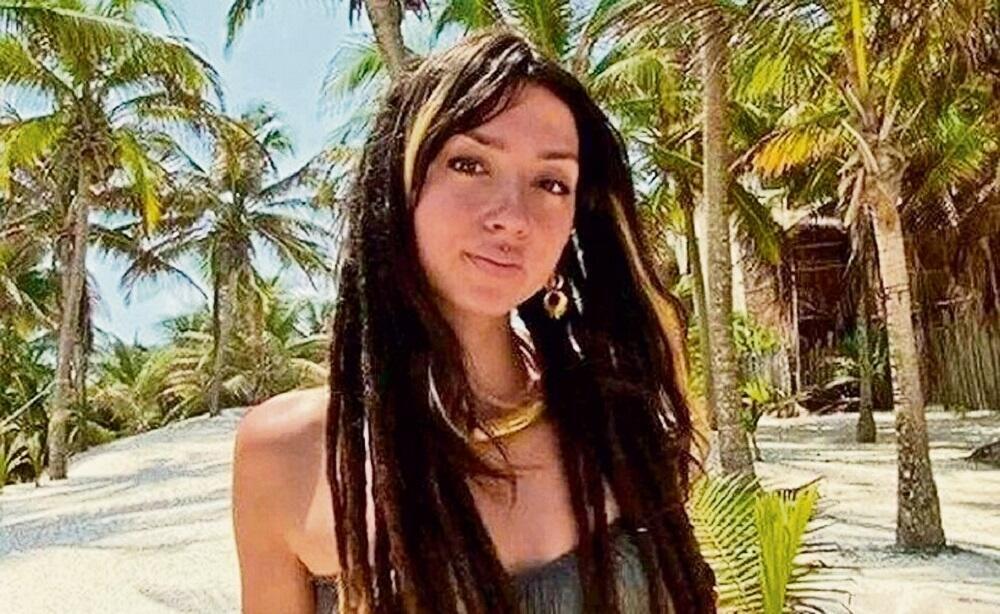The Reynolds Journalism Institute recently awarded the oldest photojournalism award in the Photo of the Year (POY) competition to AP photographer Ali Mahmud, who accompanied the terrorists on October 7 and documented them committing atrocities and crimes against humanity, including the abduction of Israeli hostage Shani Louk and the terrorists on the van as they leaned over her body.
The Special Envoy for Combatting Antisemitism, Michal Cotler-Wunsh, criticized what she called the "normalization & mainstreaming of Hamas & other terror proxies of murderous authoritarian regimes."
2 View gallery


Hamas terrorists kidnapping the body of the late Shani Louk
(Photo: AP Photo/Ali Mahmud)
The award is handed out annually by the Missouri School of Journalism at the University of Missouri in the United States. The prize committee wrote that "The militant Hamas rulers of the Gaza Strip carried out an unprecedented, multi-front attack on Israel at daybreak Saturday, Oct. 7, 2023, firing thousands of rockets as dozens of Hamas fighters infiltrated the heavily fortified border in several locations by air, land, and sea and catching the country off-guard on a major holiday."
"Israel's retaliation after Gaza's militant Hamas rulers launched the unprecedented attack on Israel killing over 1,200 Israelis and taking captive dozens, has been fierce for Gaza and its people. Heavy Israeli airstrikes on the enclave have killed thousands of Palestinians," as was written.
2 View gallery


Shani Louk was brutally murdered and then paraded through Gaza
(Photo: Private album)
Mahmud is one of the photographers investigated by the HonestReporting organization. Several photographers stirred controversy worldwide over photographs they took on that dreadful Saturday after they joined Hamas terrorists in their massacre of Israel's residents. The investigation alleges that photographers who worked with international media outlets such as AP, Reuters and CNN participated in the October 7 attack.
Following the investigation, CNN announced that they ceased ties with the photographer who worked with them, who was also photographed embracing Hamas leader in Gaza, Yahya Sinwar.
Reuters and AP refused to say they would stop working with those photographers, and indeed, in the months since, they continued to use additional photos taken, among others, by Rapheh. The agencies denied any prior knowledge of the attack.
"It's good that the photo won the prize, this is one of the most important photos in the last 50 years. These are some of the photos that shape human memory, the Jew raising his hands, the paratroopers at the Western Wall, photos that symbolize an era. This documentation of Shani, and of Noa Argamani on the motorcycle, they symbolize this era. I think it's a good thing to use it to inform the future. If I start crying, what will come of it? This is history. In 100 years they will look and know what happened here. I travel the world and everyone knows who Shani is," said Nissim, Shani's father.
A similar case occurred about three months ago when The New York Times chose the photo of photographer Mohammed Fayq Abu Mostafa for Reuters, who accompanied the Hamas terrorists on October 7, as one of its photos of the year. "The photos collected here, a tribute to the brave photographers who ran into danger to capture them, remind us of the many tears there were in 2023," the Times wrote. In describing the controversial photo of the Palestinian bulldozer breaching the border fence on the day of the massacre, the editors wrote: "The Palestinians used earthmoving equipment to breach the border fence between Gaza and Israel. Hamas militants invaded Israel by land, sea and air in a surprise attack that led to the outbreak of war."
Shani Louk's friends and family want to remember her the way she was




